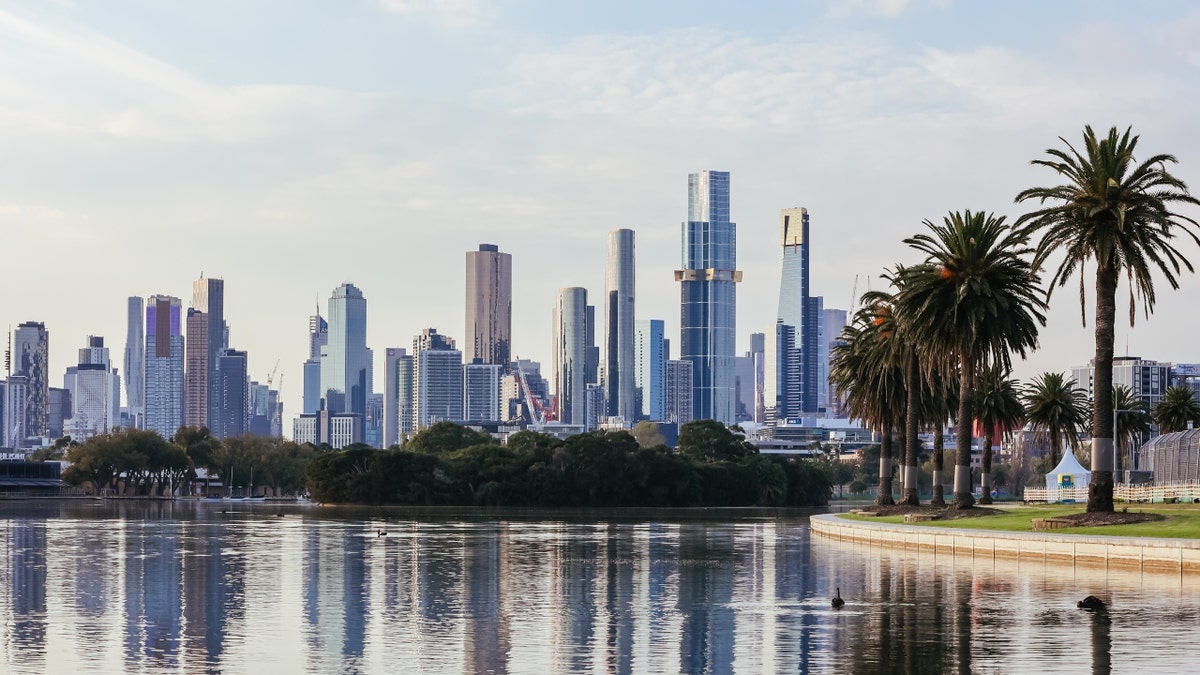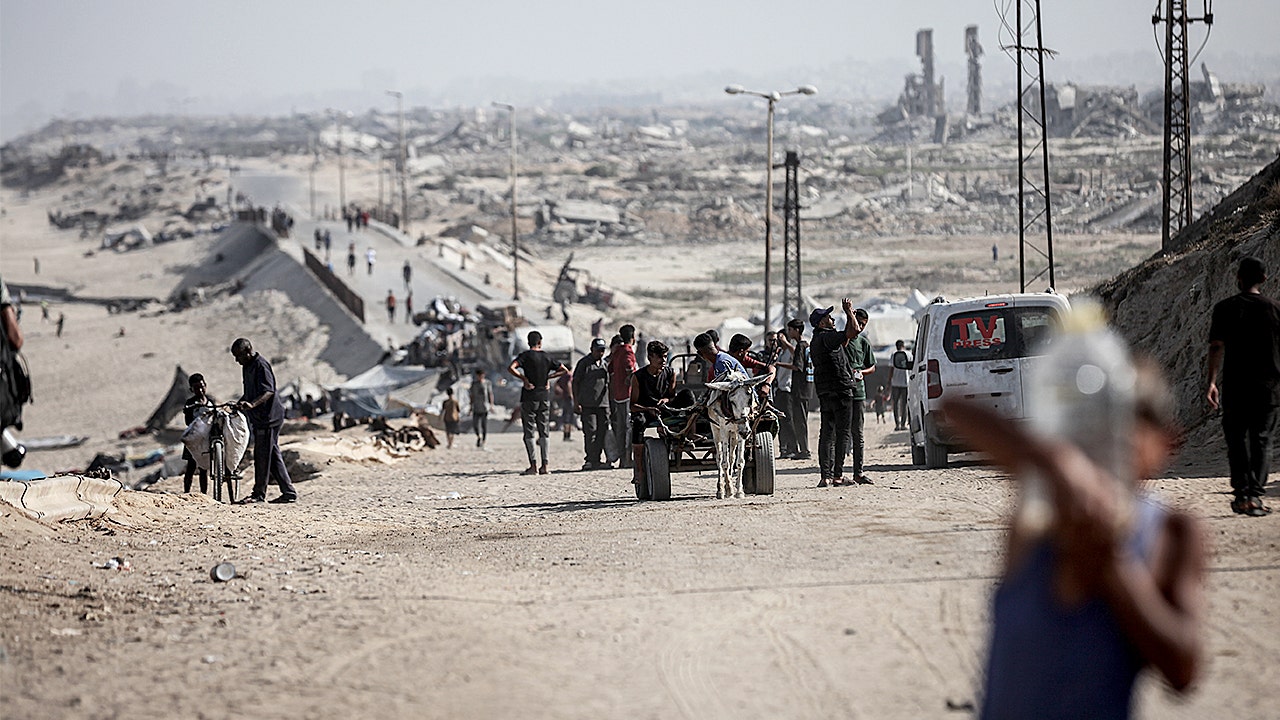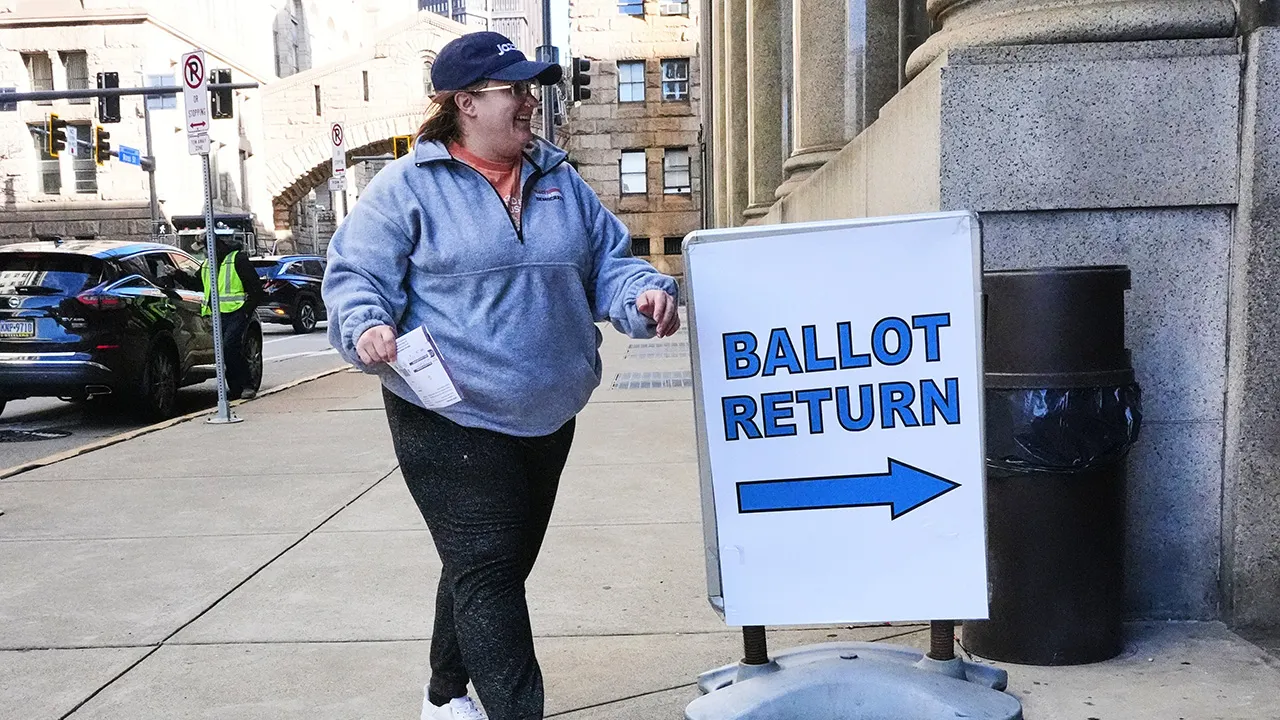World
After months in chains and darkness, freed Hamas hostages begin their long road to recovery
TEL AVIV, Israel (AP) — They will be treated for malnutrition, lack of sunlight and the trauma of wearing leg chains for months. They suffer from unexplained pain and unresolved emotions, and they will have to relearn how to make everyday decisions as simple as when to use the bathroom.
The last 20 living hostages released by Hamas are beginning a difficult path to recovery that will also include rebuilding a sense of control over their lives, according to Israeli health officials. Along the way, each one will be accompanied by a team of doctors, nurses, specialists and social workers to guide their reentry to society after two years of captivity in Gaza.
All of the hostages were in stable condition Monday following their release, and none required immediate intensive care.
“But what appears on the outside doesn’t reflect what’s going on internally,” explained Dr. Hagai Levine, the head of the health team for the Hostages Family Forum, who has been involved in medical care for returned hostages and their relatives.
The newly freed hostages will stay in the hospital for several days as they undergo tests, including a full psychiatric exam, according to protocols from the Israeli Ministry of Health. A nutritionist will guide them and their families on a diet to avoid refeeding syndrome, a dangerous medical condition that can develop after periods of starvation if food is reintroduced too quickly.
Elkana Bohbot, an Israeli hostage released from the Gaza Strip waves walks off a helicopter at the Sheba Medical Center in Ramat Gan, Israel, Monday, Oct. 13, 2025. (AP Photo/Leo Correa)
Hostages emerged thin and pale
After previous releases, some hostages and their families chose to stay together in a hotel north of Tel Aviv for a few weeks to get used to their new reality. Others returned home immediately after their discharge from the hospital.
All of the hostages who emerged Monday were exceptionally thin and pale, the likely result of enduring long periods without enough food, Levine said.
The lack of sunlight and nutrition can lead to issues with the kidneys, liver and cognition, as well as osteoporosis. Many hostages wore leg chains for their entire captivity, which can lead to orthopedic problems, muscle waste and blood clots.
Elkana Bohbot told his family he suffers from pain all over his body, especially his back, feet and stomach due to force-feeding, according to Israeli television’s Channel 12.
“Ahead of his release, he received food in large portions so he will look a bit better for the world,” Rebecca Bohbot, Elkana’s wife, told reporters Tuesday from the hospital.
Some hostages who previously returned had minor strokes in captivity that were not treated, Levine said. Many also had infections and returned with severely compromised immune systems, which is why the number of visitors should be kept to a minimum, Levine said. He denounced politicians’ visits to the hostages as both unnecessary and potentially dangerous. Prime Minister Benjamin Netanyahu visited five hostages Tuesday evening and was diagnosed Wednesday with bronchitis.
“Previously released hostages were told they look ‘pretty good,’ but some needed surgeries that were very complicated. Some had constant pain. Many have all types of pains that they are not able to explain, but it’s really impacting their quality of life,” Levine said.
Levine said Israel also learned from the 1973 Arab-Israeli war, when more than 60 Israeli soldiers were held for six months in Syria. Many of them later developed cancer, cardiovascular problems and accelerated aging and were at risk for early death.
The war began when Hamas-led militants burst across the Israeli border, killing around 1,200 people and kidnapping 251. The fighting has killed more than 67,600 Palestinians, according to Gaza’s Health Ministry, which is part of the Hamas-run government. The ministry maintains detailed casualty records that are seen as generally reliable by U.N. agencies and independent experts. It does not say how many of the deaths were civilians or combatants.
Ziv Berman, an Israeli hostage released from the Gaza Strip gestures from a minibus at the Sheba Medical Center in Ramat Gan, Israel, Monday, Oct. 13, 2025. (AP Photo/Leo Correa)
Restoring a sense of autonomy
The most important step for returning hostages is to help them regain a sense of control, explained Einat Yehene, a clinical neuropsychologist and the head of rehabilitation for the Hostages Families Forum. Many of the hostages were brought straight from Hamas tunnels, seeing sunlight for the first time in nearly two years, she said.
“I’m happy to see the sun. I’m happy to see the trees. I saw the sea. You have no idea how precious that is,” Elkana Bohbot told his family, according to Israeli media.
“Stimulation-wise and autonomy-wise, it’s really overwhelming,” Yehene said. “Someone is asking you a question — do you need to go to the bathroom? Would you like to eat something? These are questions they never heard for two years.”
Hostages’ sense of autonomy can be jump-started by allowing them to make small decisions. According to protocol, everyone treating them must ask their permission for each thing, no matter how small, including turning off a light, changing bedsheets or conducting medical tests.
Some returned hostages are terrified of the physical sensation of thirst because it makes them feel as if they are still in captivity, Yehene said. Others cannot spend time on their own, requiring a family member to be present around the clock.
Among the hostages who have experienced the smoothest integration from long-term captivity were those who were fathers, Levine said, though it took some time to rebuild trust with their young children.
“It’s a facilitator of recovery because it forces them to get back into the role of father,” Levine said. None of the women held in captivity for long periods of time were mothers.
Gali Berman, carries a placard reading in Hebrew “The People of Israel Live,” as he sits onboard an IAF helicopter en route to the hospital after being released from Hamas captivity, on Monday, Oct. 13, 2025. (IDF via AP)
The world starts ‘to move again’
The first few days after being released, the hostages are in a state of euphoria, though many feel guilty for the pain their families have been through, Yehene said.
For those who saw little media and have no idea what happened in Israel, people should take care to expose them to information slowly, she added.
Yehene said she also saw an immediate psychological response from hostages who were released in previous ceasefires after Monday’s release. Many of the previously released hostages have been involved in the struggle to return the last hostages and said they were unable to focus on their own recovery until now.
“I see movement from frozen emotions and frozen trauma,” Yehene said. “You don’t feel guilty anymore. You don’t feel responsible.”
Iair Horn was released from captivity in February, but it did not feel real until Monday, when his younger brother, Eitan, was finally freed.
“About eight months ago, I came home. But the truth is that only today am I truly free,” Horn said, sobbing as he spoke from the hospital where his brother is being evaluated. Only now that Eitan is back “is my heart, our heart, whole again.”
Liran Berman is the brother of twins Gali and Ziv Berman, who were also released.
“For 738 days, our lives were trapped between hope and fear,” Liran Berman said. “Yesterday that chapter ended. Seeing Gali and Ziv again, holding them after so long, was like feeling the world start to move again.”

World
Jennifer Lawrence Did Not Use an Intimacy Coordinator With Robert Pattinson Because ‘He’s Not Pervy,’ Refused to Let ‘Die My Love’ Edit Her Cellulite: ‘No. That’s an Ass!’

Jennifer Lawerence appeared on the “Las Culturistas” podcast during her “Die My Love” press tour and revealed she did not need to use an intimacy coordinator while filming the movie’s sex scenes with co-star Robert Pattinson. The Lynne Ramsay-directed psychodrama stars Lawrence as woman who descends into psychosis after the birth of her child. Pattinson plays the character’s increasingly useless husband.
“We did not have [an intimacy coordinator], or maybe we did but we didn’t really… I felt really safe with Rob,” Lawrence told the podcast hosts. “He is not pervy and very in love with [partner] Suki Waterhouse. We mostly were just talking about our kids and relationships. There was never any weird like, ‘Does he think I like him?’ If there was a little bit of that I would probably have an intimacy coordinator. A lot of male actors get offended if you don’t want to fuck them, and then the punishment starts. He was not like that.”
Lawrence, who has received universal acclaim and Oscar buzz for her performance in “Die My Live,” also appears nude in the movie, which she filmed while pregnant with her second child. During a recent screening of the movie (via Vulture), the Oscar winner said she allowed herself to be naked on camera without giving any thought to how she might look. This was a change of pace from when Lawrence went full frontal in the R-rated comedy “No Hard Feelings” and exercised hard before filming.
“I don’t care about nudity. I’m not sensitive about it,” Lawrence said. “I wanted Lynne to have total freedom artistically… I think being pregnant took a lot of, like, vanity anxiety away. Before ‘No Hard Feelings,’ I was dieting and not eating carbs and working out. I was pregnant [for ‘Die My Love’]. Like, what was I gonna do? Not eat? I was working 15 hours a day. I was just tired… I remember, like, them sending over a close-up of cellulite and being like, ‘Do you want us to touch this up?’ And I was like, ‘No. That’s an ass.’”
“Die My Love” opens in theaters Nov. 7 from Mubi. Listen to Lawrence’s full interview on the “Las Culturistas” podcast here.
World
Nursery apologizes for alleged antisemitic remark to jobseeker in rejection text message: ‘Repugnant’

NEWYou can now listen to Fox News articles!
Public outrage erupted after a young Israeli jobseeker received a rejection message that civil rights activists condemned as “repugnant,” sparking a protest outside an Australian plant nursery and prompting the business to publicly apologize for its co-owner’s alleged antisemitic remarks.
A 24-year-old Jewish woman, who wished to remain anonymous, received the rejection text after applying for a job at The Garden of Eden Nursery in Albert Park in Melbourne, the Herald Sun reported on Saturday.
Brett Dahan allegedly told the woman that the position had been filled by “someone with a semblance of humanity” and that she should leave the country — just weeks after she had moved to Australia.
“Unfortunately, the position has been filled by someone with a semblance of humanity and who cares for plants, animals, and the environment. Good luck on your journey and I hope you leave Melbourne soon! Free Palestine and end genocide NOW. You’re complicit in IT,” the text read.
IRAN’S PROXY WAR ON JEWS IS AN ALL-OUT ATTACK ON WESTERN CIVILIZATION. AUSTRALIA GETS IT
The Garden of Eden Nursery in Albert Park in Melbourne, Australia. (Google Maps)
Having expected a warm welcome after her move, the woman said she was “shocked and deeply disappointed” by the hostility of the response, the Herald Sun reported.
“I came to Australia believing it was a fair and welcoming country but reading those words – so full of hostility – was heartbreaking,” she said. “I was judged, not as a person, but as an Israeli.”
In a phone call with the Herald Sun, Dahan said he “did not know” why he had sent the message. The local outlet added that he repeatedly failed to answer any follow-up questions.
ANTI-ISRAEL ACTIVIST CONFRONTS FORMER IDF SOLDIER ON NEW YORK BEACH, GETS QUESTIONED IN RETURN

The Melbourne skyline in Australia. (Chris Putnam/Future Publishing via Getty Images)
The incident has sparked widespread backlash from the Jewish community, with protesters gathering outside the nursery, news.com.au reported.
According to Australia’s Equal Opportunity Act, discriminating against a job applicant based on their nationality is illegal.
In a statement shared by the company on Sunday, the nursery, run by twin brothers Brett and Scott Dahan, later issued a statement apologizing to the Jewish community and expressing regret over the message sent “by a staff member.”
“The Garden of Eden Nursery would like to express its regret and extend its sincere apologies to the community in regards to the recent message sent to a member of the public by a staff member,” the company said, adding that the matter is being addressed internally.
NETANYAHU SLAMS AUSTRALIA PM, SAYS HE ‘BETRAYED ISRAEL AND ABANDONED AUSTRALIA’S JEWS’

Aerial view of Melbourne, Australia. (iStock)
“We are deeply upset and disappointed by the content of the message, which in no way reflects the values, standards, or spirit of our business or team,” the company continued.
CLICK HERE TO DOWNLOAD THE FOX NEWS APP
The country’s Anti-Defamation Commission Chairman Dr. Dvir Abramovich criticized the apology Sunday and said true accountability would be to close the business.
“Mr. Dahan’s repugnant text wasn’t a slip. It was a deliberate, written act meant to humiliate and degrade,” Abramovich said in a statement on social media. “Apologizing ‘to the community,’ blaming ‘a staff member,’ and saying it will be handled ‘internally’ is not accountability.”
Abramovich emphasized that the woman deserves a direct and personal apology from Dahan.
The Garden of Eden Nursery did not immediately respond to a request for comment from Fox News Digital.
World
Israel’s focus on political drama rather than Palestinian rape victim

The revelation last week by Israel’s top military lawyer, Major General Yifat Tomer-Yerushalmi, that she leaked the footage of a gang rape of a Palestinian detainee at the Sde Teiman military detention centre in 2024 has shaken the country’s political and media establishment.
Israeli Prime Minister Benjamin Netanyahu – whose leadership of the genocidal war on Gaza has drawn global condemnation – called the leak “perhaps the most severe public relations attack that the State of Israel has experienced”. Critics of Netanyahu’s view come from establishment voices desperate to defend the judiciary and state institutions, which they believe Netanyahu and his allies are exploiting the leak to undermine.
list of 4 itemsend of listRecommended Stories
Lost amid headlines fuelled by the leak’s admission is the gang rape of the Palestinian prisoner at Sde Teiman on July 5, 2024. The attack was so brutal that the man was admitted to hospital with what the Israeli daily Haaretz revealed was a ruptured bowel, severe anal and lung injuries, and broken ribs – injuries that later required surgery.
“It’s a huge story in Israel, but you won’t see the word ‘rape’ anywhere in it,” Orly Noy, editor of the Hebrew language Local Call, told Al Jazeera. “The contextualisation of the story is entirely different here than anything you or I might see.”
Instead of focusing on the rape and the ongoing legal proceedings against the five suspects, the story has instead centred on Tomer-Yerushalmi and those accused of helping her cover up the leak.
Speaking on Israeli television on Saturday night, a member of Netanyahu’s Likud Party, Energy Minister Eli Cohen, told viewers that Tomer-Yerushalmi was “supposed to be the bulletproof vest, the protector, of the [Israeli military] soldiers”.
“Instead of that, she stabbed them in the back,” he said about the lawyer who leaked footage of soldiers appearing to rape a prisoner. “In this case, we are talking about treason.”
Defence Minister Israel Katz was no less damning, releasing at least seven statements targeting the military attorney in a week and accusing her of participating in “blood libel” against the five alleged rapists.
The politicisation of rape
Focusing on Tomer-Yerushalmi, rather than the alleged rapists, is nothing new.
The former chief military advocate had been the subject of political pressure and accusations of covering up the source of the leak since the first reports of the rape emerged in August 2024. That pressure continued to build, culminating in the announcement from Attorney General Gali Baharav-Miara in early October of an investigation into the source of the leak.
On Friday, November 1, Tomer-Yerushalmi resigned and admitted that she had been the source of the leak. Two days later, she was reported missing for several hours following the discovery of what friends and family worried was a suicide note, which prompted a large-scale search.
Within hours of being found safe, Tomer-Yerushalmi was arrested, and the suicide note was dismissed by Israeli prosecutors as a ploy. She has been charged with multiple offences, including fraud, breach of trust, obstruction of justice, and abuse of office.
Since Sunday, police have also arrested the military’s former chief prosecutor, Colonel Matan Solomosh, on suspicion of helping Tomer-Yerushalmi cover up the leak. There have also been suggestions that the attorney general and her staff may have been involved.
“Rape doesn’t matter,” said political analyst Ori Goldberg, referring to how Israeli authorities are responding to news of the leak. “What matters is the woman who leaked the tape and what they want to call the deep state.”
“For Netanyahu and others, this is evidence that the deep state has gotten too big for its britches and that, by accusing Tomer-Yerushalmi of collaborating with the attorney general, they have evidence of the treachery and a further means of undermining any civilian oversight there may be over their workings.”
The ‘deep state’
Netanyahu and his allies’ fight with the judiciary dates back to what his critics call the “judicial coup” of 2023, when he proposed a sweeping legislative overhaul of Israel’s judicial system. He has also faced multiple charges of corruption since 2019.
The prime minister’s proposed judicial reforms would grant his right-wing coalition the freedom to act without the check of the Supreme Court, potentially leading to a further crackdown on dissent and the rights of Palestinians.

Attorney General Baharav-Miara has found herself in the firing line for resisting those reforms. In 2023, she issued legal guidance opposing the proposed judicial overhaul, writing that it would undermine Israel’s checks and balances, and that it was “a sure recipe for harming human rights and clean governance”. She also told the prime minister to distance himself from the judicial reforms, noting that it would be a conflict of interest amid his own corruption trial.
“They want to cover up the rape,” Aida Touma-Suleiman, a member of the Israeli parliament representing the left-wing Hadash-Ta’al faction, told Al Jazeera. “That’s why they’re dealing with the prosecutors and not the crime itself.”
“Benjamin Netanyahu is using this, just like the right wing is using this. They’ve been repeating the same messaging ever since the story broke. This is how the judiciary works. These are your so-called checks and balances. Look at them, they’re criminals.”
Justice lost
Amid the political furore, the likelihood of prosecuting the alleged rapists appears to be diminishing.
On Monday, it emerged that the rape victim had been returned to Gaza in October as part of the exchange of captives, leading to speculation that he might not appear in proceedings against his alleged attackers.
Five of those indicted for the assault saw their charges downgraded to “severely abusing” the detainee on Sunday, when they appeared outside Israel’s Supreme Court wearing balaclavas to hide their identity.
A lawyer for the suspects, Moshe Polsky, told journalists that his clients could not expect a fair trial due to the leak, saying “the wheel cannot be turned back” and that, consequently, the indictment process had been tainted.
One suspect, who declined to be identified, described himself and his fellow suspects as loyal patriots wrongfully targeted by a legal system they see as undermining their service. “We knew we had to defend the country [following the October 7 attack],” he said.
“Since that day, dozens of fighters are still fighting for justice not on the battlefield, but in courtrooms.”
For observers such as journalist Noy, however, there is little to do with justice in the saga of accusation, counter-accusation and cover-up that has come to overshadow the brutal rape of a prisoner in Israeli custody.
“For the two sides, this is all about the system and nothing to do with the Palestinian victim,” she reflected.
“One side sees it as [about] the old elite protecting itself, and the other about safeguarding the institutions of the state,” Noy said. “But don’t forget, these are the same institutions they need to protect to continue the abuse of Palestinians. These are the defences they offer up whenever they’re criticised from overseas.”
-

 Milwaukee, WI1 week ago
Milwaukee, WI1 week agoLongtime anchor Shannon Sims is leaving Milwaukee’s WTMJ-TV (Channel 4)
-

 News1 week ago
News1 week agoWith food stamps set to dry up Nov. 1, SNAP recipients say they fear what’s next
-

 Culture1 week ago
Culture1 week agoVideo: Dissecting Three Stephen King Adaptations
-

 Seattle, WA4 days ago
Seattle, WA4 days agoESPN scoop adds another intriguing name to Seahawks chatter before NFL trade deadline
-

 Seattle, WA1 week ago
Seattle, WA1 week agoFOX 13’s Aaron Levine wins back-to-back Jeopardy! episodes
-

 San Diego, CA1 week ago
San Diego, CA1 week agoAdd Nick Hundley, Ruben Niebla to list of Padres’ managerial finalists
-

 Education1 week ago
Education1 week agoOpinion | New York City Mayoral Candidates: Who Would Be Best?
-

 Culture1 week ago
Culture1 week agoCan You Pair Up These 1980s Novels and Their First Lines?














